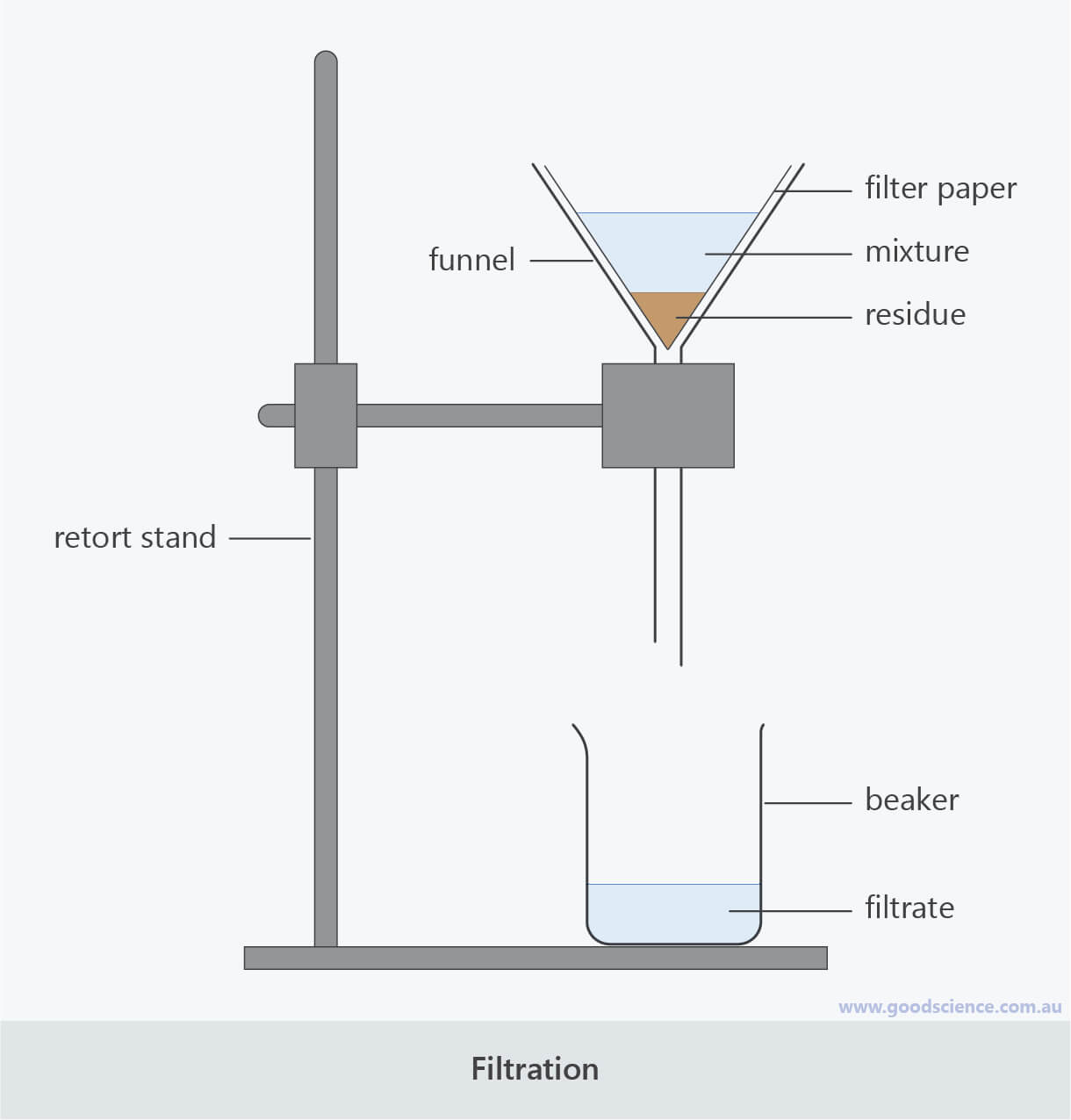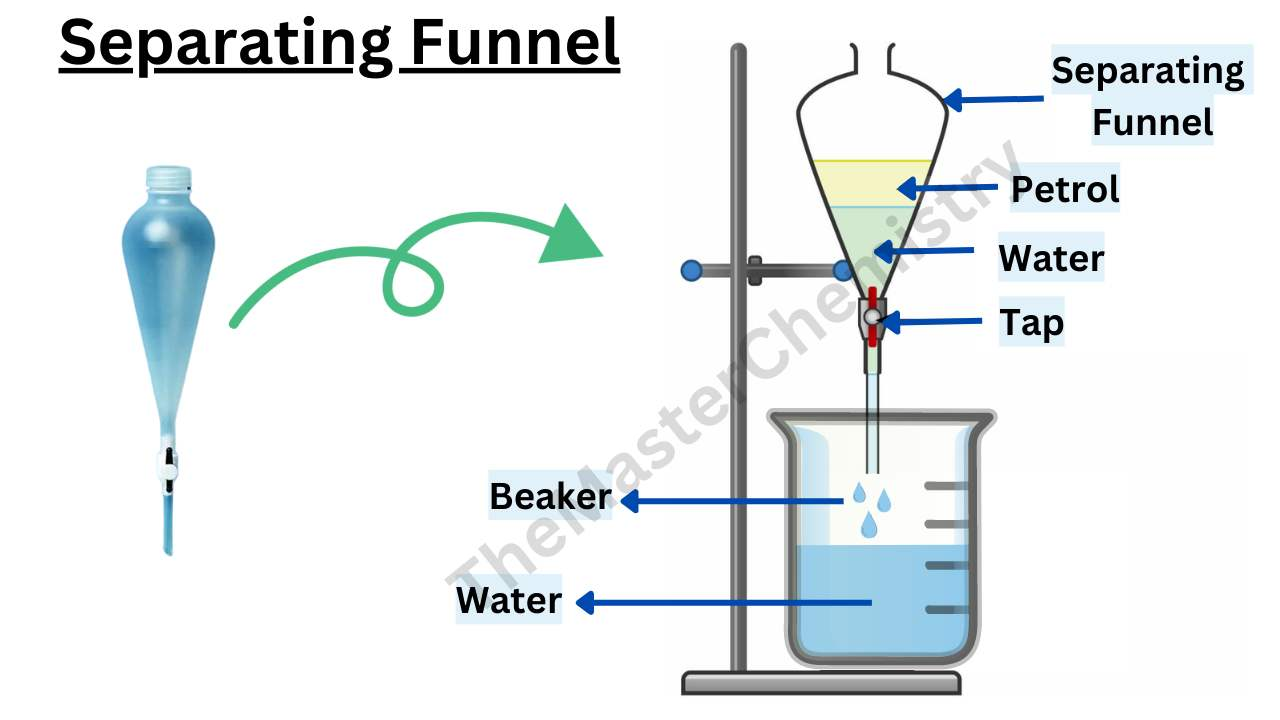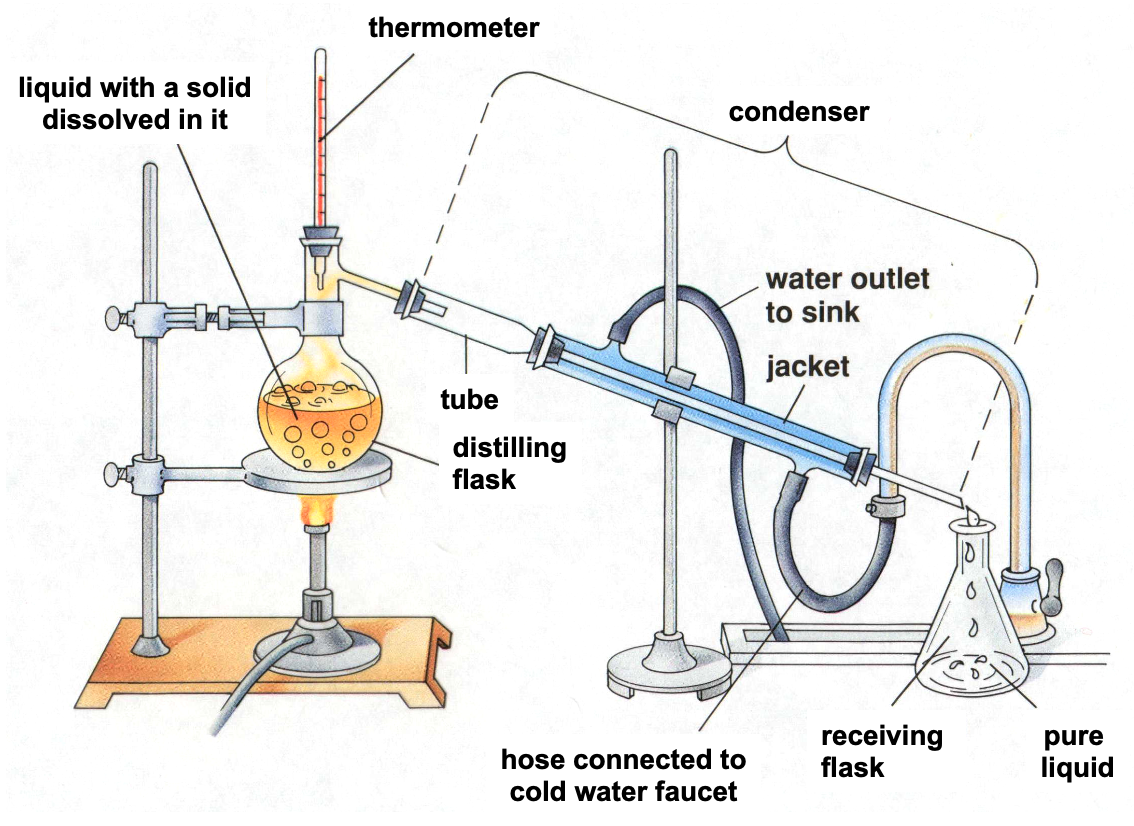Separating Mixtures
- Mixtures can be separated by any means that makes use of the different physical properties of its constituents.
- The properties of the components of a mixture determine the best separation method.
- Sieving
- Filtration (diagram)
- Decanting
- Use of separation funnel (diagram)
- Distillation (diagram)
- Fractional distillation (basic diagram)
- Electrostatic attraction
- Magnetic susceptibility
- Vaporisation
- Crystallisation
Sieving
- A porous material is used to separate particles of different sizes
- Method is most common used to affect gross separations, e.g. liquids from suspended crystals or other solids
- To accelerate sieving, pressure is usually applied
- A series of sieves is stacked, with the screen of largest hole size at the top
Filtration
-
Used to separate heterogenous mixtures composed of solids and liquids
-
Uses a porous barrier to separate the solid from the liquid
-
Liquid passes through, leaving the solid in the filter paper
-
Filtration can be used to separate an insoluble substance from a soluble substance
-

Separating Funnel
- Used to separate substances of different densities, i.e. immiscible liquids/substances
- Put into a separating funnel, which is then shook
- The materials will separate due to their different densities, with the most dense at the bottom

Decantation
- Done to separate particulates form a liquid by allowing the solids to settle to the bottom of the mixture and pouring off the particle free part of the liquid
- Allows 2 immiscible liquids to separate and the lighter liquid is poured off
Distillation
- Used to separate homogenous mixtures
- Based on difference in boiling points of substances involved

Evaporation
- Solution is heated, and becomes more concentrated
- Eventually, all of the solvent will disappear
- The solute will crystallise at the bottom
- Evaporation can be used to separate a solute from the solvent in a solution
Crystallisation
- Separation technique that results in the formation of pure solid particles from a solution containing the dissolved substance
- As one substance evaporates, the dissolved substance comes out of solution and collects as crystals
- Produces highly pure solids
- Rocky candy is an example of this
Centrifuging
- Centrifuges rotate containers of liquids to separate suspended materials with different densities.
- The lighter materials move to the outside, as they are more affected by the speed
- Centrifuges separate different components of human blood or milk and to clarify solutions. A high speed separator can rotate at great speed to separate fat (cream) from milk.
- The spin drier in washing machines is a type of centrifuge that throws out the liquid by the “centrifugal force” of the rotation.
Magnetic Separation, i.e. a Magnet
- Can be used to separate a magnetic substance from a non-magnetic substance
Chromatography
- Separates components of a mixture based on ability of each component to be drawn across the surface of another material
- Mixture is usually liquid and is usually drawn across chromatography paper
- Separation occurs because various components travel at different rates
- Components with strongest attraction for paper travel the slowest
- Chromatography (colour writing) is used to separate small amounts of chemicals so that they can be analysed.
- Different substances or different components move at different speeds through a strip of wet paper, a gel or a gas.